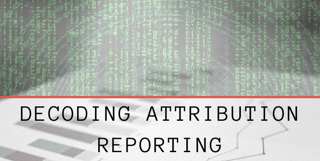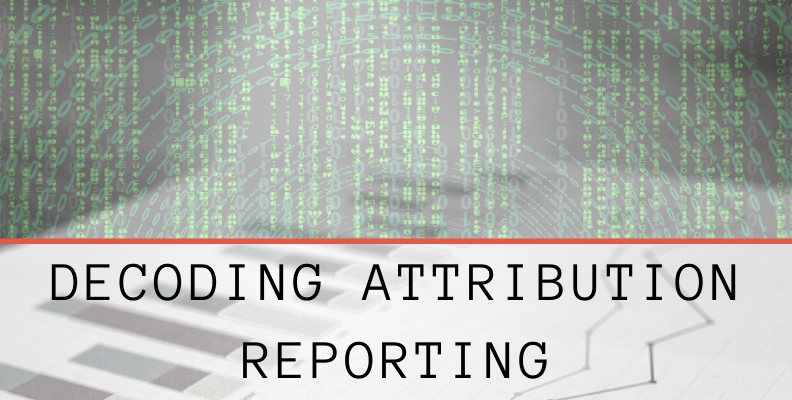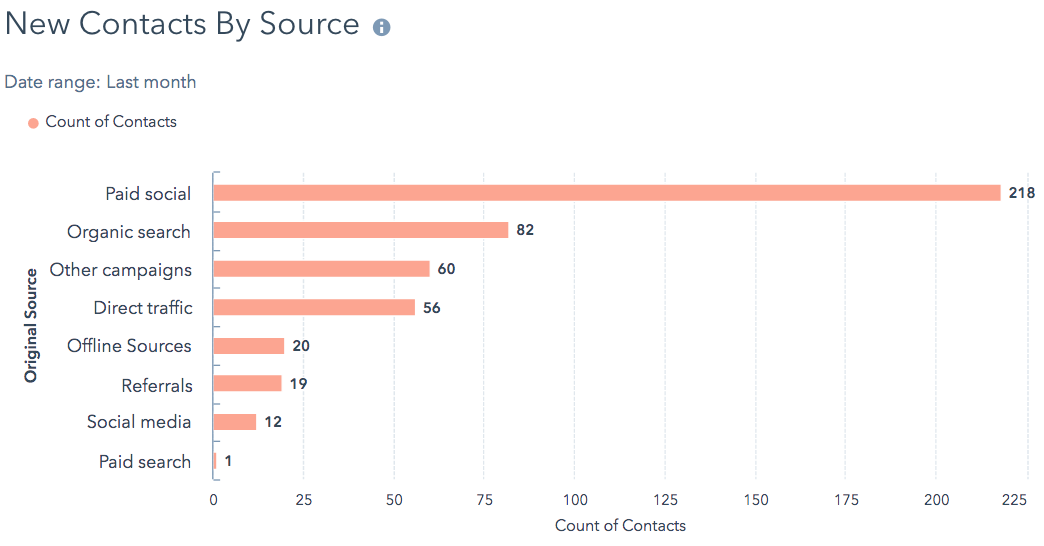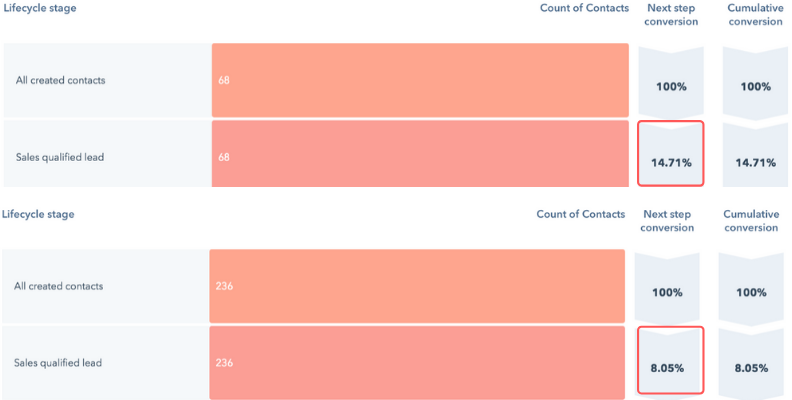Decode Your Attribution Reporting to Target Better Leads


While not a huge fan of collapsed and cringe-worthy verbiage like “Smarketing”, I do support the principle behind the term of aligning sales and marketing efforts to reach maximum ROI and profitability. If abiding by best practices of open communication, sales would be informing marketing of what campaigns they considered to harvest quality leads and marketing would keep sales in tune of campaign influence. But, since that doesn’t always happen, it’s best to have a foolproof attribution model intact that will support both team’s initiatives. Setting up an accurate attribution model is a victory in its own right, but it needs to be followed up by interpreting the reporting that your attribution system is providing to fine tune your sales enablement and marketing strategy.
What is an Attribution Model?
Let’s start off reminding ourselves what the entire point of an attribution model is. HubSpot defines attribution as a set of “rules used to determine how your marketing assets and channels receive credit for their contribution to converting visitors into contacts and customers”. According to Pew Research Center, 81% of Americans navigate through the digital landscape on a daily basis. That’s a lot of time spent online susceptible to marketing and advertising. However, being the tech savvy internet voyagers that we are, consumers are typically influenced by multiple campaigns before ever converting to a customer.
Simply put, an attribution system reveals influencing touch points and conversation paths. There are a whole slew of attribution models out there ranging from simple first-touch attribution to more complex multi-source attribution models. However, if you were to take the resulting analysis to the next level and include sale’s insight into the qualification of these leads, you can really zone in and target audiences that are proven to convert to customers and ideally, in a shortened sales cycle.
How does an Attribution System relate to Sales?
We now know that an attribution system highlights marketing touch-points throughout the buyer’s journey, so where does sale’s part come in? Well, when sales takes over they are either disqualifying those “qualified” leads, or moving them through the funnel. Once successfully converted to customers, that full loop attribution provides insight by measuring value and ROI. Furthermore, sales is also quantifying the average sales cycle of contacts from their respective channels and conversion paths.

Let’s take a look at an example:
Have you ever experienced the Hail-Mary phenomena that occurs typically end of month or quarter when marketing dollars are dumped into paid media campaigns with a hope and a prayer that at least some leads will convert? Woof. This happened recently with a client and while I could wag my finger at this and say nay, I needed data to support my claim that this strategy just wasn’t worth it.
Here's a brief synopsis:
Mid-month I pulled up attribution reporting in Hubspot for a client to check on the inbound digital marketing reporting (Lead Source 'Digital Marketing') and saw a roughly 15% conversion rate from SQLs to Customers. For this sales system in particular, SQLs were deemed to be anyone who completed a BOFU ('Bottom of the Funnel') form or booked a meeting through a chat bot. This is a very high percentage by design; the volume of converting leads was manageably low due to the qualifying parameters which defined an SQL.
Well, come end of month Sales was hungry and that ROI just wasn’t quite there for Marketing. Thus, the flood gates opened via Facebook. Various Facebook advertisements were posted and the qualifications for what defined a SQL expanded to include anybody who filled out a form from Facebook advertisements in order to shoot them straight on through to sales. The impact? The same report I was looking at just weeks before decreased to an 8% conversion rate. I knew these advertisements were the crack in the foundation because when I filtered out any SQL’s with an Original Source of ‘Paid Social’, that percentage jumped back up to 14.8%.

What we can learn from attribution reporting:
Attribution reporting should be setup to easily peal back layers to viably drill down into your data. My next move was to see how Sales was handling this sudden influx of SQL’s to assess the damage. My initial assumption was lead response time may have been poor because the volume of SQL's was so high. Instead, what I discovered was that the majority of these Facebook leads were immediately being disqualified by sales reps. Near 70% of leads with a lead source of Social Media, primarily from Facebook, were being disqualified. They were junk. While a small amount of leads were converting, the overall conversion rate was depleting, and it was only a matter of time before sales lost their minds over these time-sucking junk leads.
In this case, I could relay back to the client with hard data in hand that while this "catch-up" strategy is sparsely bringing in leads, it will likely cause more damage than it's worth by further deepening a preexisting chasm between sales and marketing by the sheer volume of extraneous leads. We needed to fine tune the parameters to not waste sale's time.
How to solve
Your attribution model may organically provide a solution to the issue it revealed. Through attribution you should begin to see stabilized trends. However, if the needle begins to move one way or the other, it doesn’t always mean poor marketing; it may also highlight something is working.
Looking at the reporting, I could see a high conversion rate for leads that a booked a meeting with a sales rep through the Drift bot setup on the website. So, if these paid media leads were eager enough to buy in on the client's service, we bet that if we sent an automated email out that includes a Drift link to book a meeting themselves at a time that worked for them, they'd bite. If not, they would remain as MQL's until they resembled better qualified leads. This would free up sales prospecting time so they could focus on the most qualified leads. Meanwhile, along with better targeting on Facebook, we could analyze the Facebook leads, segment them out by region and various other data points, and adjust their lead score if Sales still felt hungry enough to prospect warm leads.
A Multi-use Model
Attribution models are commonly associated with Marketing ROI, but if analyzed correctly they can reveal both strengths and weaknesses in strategy alignment between sales and marketing. Furthermore, by regularly monitoring your reporting you can address issues and make necessary tweaks to pivot marketing campaigns back on track.
